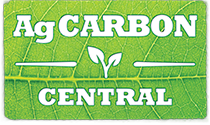Author Matthew Warnken is the managing director of Agriprove, Australia’s largest aggregator of soil carbon credits. In this contributed opinion piece, he argues that buying soil carbon credits this World Environment Day is a way to tax emitters and fund important land management.
When you buy a soil carbon farming offset (a carbon credit from a soil carbon project), you are funding farming practices that improve soil health – literally building the quality of the soil biome.
In the context of land restoration, desertification and drought resilience, the soil biome matters because microbiomes are vast universes of microbial communities that do the work ‘at a grassroots level’ to keep plants growing and livestock fed.
In my presentation for this year’s National Sustainable Living Festival in conjunction with the Business Council for Sustainable Development Australia, I highlighted the importance of soil microbiomes to soil carbon and the role these functions play in maintaining biodiverse food systems in our changing climate. Importantly, the presentation drew attention to the business of innovation as a vital component of delivering mainstream climate solutions for Australia.
This is because scaling soil carbon farming does not occur in a vacuum – it needs a funding mechanism to support landholder initiatives and actions. Which is where carbon credits play a necessary role.
The economics of carbon credit offsets provide both an economic instrument of a price on carbon and a funding mechanism for research and innovation leading to practical action that supports land restoration and conservation of soil biomes. The problem is that offsets are under attack as providing a licence to pollute for fossil fuel companies.
The irony is that many of these antagonists to carbon credits do not question the economic efficiency of a carbon tax. Even though in the case of a tax, the use of the funds raised is irrelevant. Funds go straight to consolidated revenue and the tax literally is a licence to pollute. It only works to reduce emissions by increasing the cost of supply according to the carbon intensity of supply.
Economics 101 states that higher costs inevitably result in lower supply. Purchasing a carbon offset works the same as a carbon tax for the entity buying the offset. It increases the cost of supply and instals an internal price on carbon.
However, it does so much more than a carbon tax.
The double dividend of an offset is that it provides a funding mechanism for innovation and incentivises actions to avoid emissions and remove carbon from the atmosphere.
Support for the development of a vibrant offsets market is crucial for accelerating progress toward a safe climate, but discussion of the economic double dividend is missing from the so-called scientific integrity debate.
To make progress towards a safer climate, we need to incorporate a multi-criteria framework into the debate. Ignoring aspects such as economic fundamentals will result in perverse outcomes where we miss out on funding the necessary innovation and action for meaningful climate solutions.
The conversations at last week’s Soil Symposium were a great start to broadening the carbon debate to a multi-disciplinary forum, but inevitably there’s more work to be done to highlight the double dividend of offsets.
So this World Environment Day as you contemplate meaningful action of climate, instead of planting a tree – buy a soil carbon offset instead!


That was a good read on why companies should buy soil carbon credits.
Here’s just a few reasons why farmers should grow and sell soil carbon credits (there are lots more):
1) Plants get maybe 80% to 90% of their essential nutrients from the decay of soil organic matter (SOM- which is ~57% carbon). You can get carbon for free from the atmosphere, but some of the other 43% – essentially a lot of NPKS, you may have to pay for if you don’t recycle your SOM.
2) That means that if you have more available soil carbon, you need to buy less fertiliser.
3) Higher soil organic matter means greater water holding capacity in the soil, and you can grow crops and pasture without super, but you can’t grow anything without water.
4) Soil organic matter has huge cation exchange capacity, and so increasing your CEC by increasing SOM means you’ve got a better chance of retaining the non-C SOM, including the expensive chemical fertiliser you added to your soil.
5) Higher SOM means higher aggregate stability, so better aeration and higher strength, meaning you’re less likely to get bogged or compact your soil.
6) Better disease suppression, more nutrient availability to crops and stock.
7) Do a carbon project correctly, improving your soil’s fertility and structure, can potentially be paid for by selling your carbon credits.
Disclosure: We have a carbon project with Agriprove and we’ve now got a huge amount of useful data that has enabled us to improve our soil and radically increase our productivity.